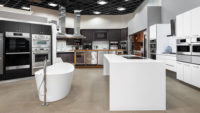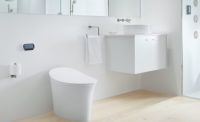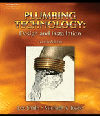The less, the better. That’s what manufacturers of toilets and flushometers are seeing when it comes to trends they are seeing in the commercial space.
“The primary driver we see in the commercial toilet space is a push for lower water consumption,” says Kevin McJoynt, director of product management — fixtures at Gerber. “The savings for lower-flow fixtures can be amplified in commercial applications because of the quantities of units installed and total water usage, especially as water and sewer rates continue to climb.”
But Sloan Product Line Manager, Fixtures Mark Lawinger feels the uptick in the specing of low-flow products is beginning to challenge the ability to provide both a good user experience, as well as an optimized plumbing system.
“Manufacturers are doing a great job of designing flushometers and fixtures in general that eliminate waste with far less water than previously thought,” he notes. “Yet, there are unfortunate consequences to this innovation. The margin for error for providing adequate evacuation and drainage has now shrunk considerably and can result in less than optimal performance in challenging situations, such as when there is marginal water pressure or old and poorly pitched drain lines. The industry needs to take a hard look at building and plumbing standards and determine if they need to be updated to account for the changes in water usage.”
Gerber’s McJoynt stresses product performance is a huge factor in the low-flow conversation. “Of course, low-flow fixtures do not save any water or money if they do not perform well,” he says. “Multiple flushes of poor-performing products quickly negates intended savings. Our customers are getting an increasing number of requests to replace current fixtures with lower-flow versions as quickly and easily as possible. That often means a direct replacement that fits the exact rough-in, covers the existing footprint, or wall print for urinals or wall-hung bowls, and effectively uses less water.”
Not surprisingly, connected/smart technology continues to proliferate throughout this space. “As smart-home innovations grow, customers will expect this technology when they leave their homes, and this will carry over into commercial restroom spaces,” Zurn Marketing Manager —Finish Plumbing & World Dryer Kimberly Fairley says. “Owners will need to adapt and upgrade their fixtures to keep pace. Fortunately, owners can choose connected sensor products with high reliability, giving customers the convenience they have come to expect while giving the building owner efficient, longer-lasting fixtures with real-time performance insights.”
Sloan’s Lawinger says the incorporation of interconnected smart products is becoming an increasingly important element in the commercial restroom. “Data stemming from products such as faucets, flushometers, soap dispensers and hand dryers is the key to better understanding operational needs, usage and trends,” he explains. “These products can provide the data that will improve the user experience, while also providing property owners and maintenance staff with valuable information.”
Fairley also sees building owners looking for longer lifespans for their restroom fixtures. “And by eliminating the solenoid in our faucets and flush valves and designing them with a motor gear-driven platform, they can withstand more than 500,000 cycles.”
Saniflo U.S.A. CEO Regis Saragosti is noticing an increase in the demand for ADA-compliant toilets, and feels the next big thing may be the connected toilet that helps a user keep track of their health. “Another emerging trend is the reuse of graywater to flush toilets. We expect demand for this technology to grow in the near future,” he notes.
But Saragosti says of prime importance is balancing the green aspect with the performance piece for Saniflo’s products going forward. “The future for our company in North America is to continue developing flush technologies that will use less water, while also improving the quality of the flushing, despite using less water,” he says.










